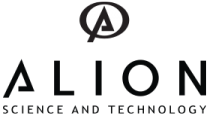Global Dermatology Drugs Market to 2023 Featuring AbbVie, Amgen, Astellas Pharma, Eli Lilly, J&J, Novartis, Pfizer, Sanofi and Regeneron & Valeant Pharmaceuticals
DUBLIN, September 28, 2017 /PRNewswire/ --
The "Global Dermatology Drugs Market to 2023 - Growth Driven by Increased Uptake of Interleukin Receptor Inhibitors for Psoriasis and Atopic Dermatitis" report has been added to Research and Markets' offering.
http://mma.prnewswire.com/media/539438/Research_and_Markets_Logo.jpg
Global revenue from the dermatology market is forecast to increase from $19.8 billion in 2016 to $36.6 billion in 2023, at a compound annual growth rate of 9.13%.
Global Dermatology Drugs Market to 2023 - Growth Driven by Increased Uptake of Interleukin Receptor Inhibitors for Psoriasis and Atopic Dermatitis provides an introduction to dermatology, including disease epidemiology, symptoms, etiology, pathophysiology, co-morbidities and complications. Disease classification and methods of diagnosis are also provided.
There are 850 products in the dermatology pipeline with a disclosed stage of development, but the majority of these drugs are at an early stage of development. Some 42% of the pipeline is in the Preclinical stage, while 14% is in the discovery stage. However, 32% of the pipeline is in clinical development, but only 3% are in the Pre-registration stage and less than half are novel.
Four drugs that were approved for psoriasis are Cosentyx, Otezla, Eucrisa and Taltz. The most notable of the four are Cosentyx and Otezla, which were approved in 2015 and 2014, respectively, and are forecast to generate $3.8 billion and $2.7 billion from the therapy area in 2023, respectively. The two most recently approved psoriasis treatments, Taltz and Eucrisa, are not expected to achieve the same level of commercial success as Cosentyx or Otezla because they are entering a market that is already saturated with entrenched competitors that have reduced the level of unmet need.
Dermatology therapy area is dominated by top 20 pharma companies. In 2016 the most commercially successful companies in the therapy area were Johnson & Johnson, AbbVie, Amgen, Novartis and Pfizer. Across the forecast period these companies will continue to generate high revenue, but the companies will all see their market shares change.
Scope:
-- Which drugs will achieve blockbuster status and how will the key player
companies perform during the forecast period?
-- What are the leading companies in terms of market share?
-- Which companies are forecast to experience the largest growth in market
share?
-- Which companies rely heavily on revenue derived from antibacterial
drugs?
-- How will the market respond to recent approvals?
-- Will generics and biosimilars have a significant impact on the market
over the forecast period?
-- What class of drugs dominate the market?
-- What molecular targets are most popular in the pipeline?
-- What are the commercial prospects for the most promising late-stage
products?
Key Topics Covered:
1 Table of Contents
2 Introduction
2.1 Therapy Area Introduction
2.2 Symptoms
2.3 Etiology and Pathophysiology
2.4 Co-morbidities and Complications
2.5 Diagnosis, Scales and Grading
2.6 Epidemiology Patterns and Forecasts - Prevalence and Patient Segmentation
2.7 Treatment
3 Key Marketed Products
3.1 Overview
3.2 Humira (adalimumab) - AbbVie
3.3 Remicade (infliximab) - Johnson & Johnson
3.4 Enbrel (etanercept) - Amgen
3.5 Stelara (ustekinumab) - Johnson & Johnson
3.6 Neoral (cyclosporine) - Novartis
3.7 Protopic (tacrolimus) - Astellas Pharma
3.8 Cosentyx (Secukinumab) - Novartis
3.9 Dupixent (dupilumab) Sanofi and Regeneron
3.10 Taltz (ixekizumab) - Eli Lilly
3.11 Eucrisa (crisaborole) - Pfizer
3.12 Siliq (Brodalumab) - Valeant Pharmaceuticals
3.13 Elidel (pimecrolimus)
3.14 Elocon (mometasone furoate)
3.15 Differin (adapalene)
3.16 Metolate (methotrexate)
3.17 Clobex (clobetasol propionate)
3.18 Conclusion
4 Pipeline Landscape Assessment
4.1 Overview
4.2 Molecule Types in the Pipeline
4.3 Molecular Targets in the Pipeline
4.4 Clinical Trials
4.4.1 Failure Rate by Stage of Development, Indication, Molecule Type and Molecular Target
4.4.2 Clinical Trial Duration by Stage of Development, Indication, Molecule Type and Molecular Target
4.4.3 Clinical Trial Size by Stage of Development, Indication, Molecule Type and Molecular Target
4.4.4 Aggregate Clinical Program Size by Stage of Development, Indication, Molecule Type and Molecular Target
4.4.5 Assessment of Key Pipeline Products
4.5 Conclusion
5 Multi-scenario Market Forecast to 2023
5.1 Overall Market Size
5.2 Generic Penetration
5.3 Revenue Forecast by Molecular Target
5.3.1 Tumor Necrosis Factor-Alpha
5.3.2 Interleukins 1, 4, 5, 12, 17 and 23 and Receptors
5.3.3 Calcineurin
5.3.4 Glucocorticoid Receptors
5.3.5 Phosphodiesterase
6 Company Analysis and Positioning
6.1 Revenue and Market Share Analysis by Company
6.1.1 Novartis - Will Revenue from Cosentyx Continue to Increase in the Forecast Period?
6.1.2 AbbVie - Will Humira's Patent Expiry Lead to Loss of Market Leadership?
6.1.3 Johnson & Johnson - Guselkumab and Stelara Fail to Offset Revenue Lost from Remicade
6.1.4 Sanofi - High Revenue Growth from Dupixent Will See Sanofi's Revenue from the Dermatology Therapy Area Increase
6.1.5 Pfizer - Approval of Eucrisa to Drive Growth in the Dermatology Therapy Area
6.1.6 Celgene - Otezla Expected to Achieve Blockbuster Status in the Therapy Area
6.2 Company Landscape
6.3 Marketed and Pipeline Portfolio Analysis
7 Strategic Consolidations
7.1 Licensing Deals
7.1.1 Deals by Region, Year and Value
7.1.2 Deals by Stage of Development and Value
7.1.3 Deals by Molecule Type, Mechanism of Action and Value
7.1.4 Figures for Licensing Deals Valued Above $100m
7.2 Co-development Deals
7.2.1 Deals by Region, Year and Value
7.2.2 Deals by Stage of Development and Value
7.2.3 Deals by Molecule Type, Mechanism of Action and Value
7.2.4 Figures for Co-development Deals Valued Above $100m
8 Appendix
Companies Mentioned
-- AbbVie
-- Amgen
-- Astellas Pharma
-- Eli Lilly
-- Johnson & Johnson
-- Novartis
-- Pfizer
-- Sanofi and Regeneron
-- Valeant Pharmaceuticals
For more information about this report visit https://www.researchandmarkets.com/research/lcmhpz/global
Media Contact:
Research and Markets
Laura Wood, Senior Manager
press@researchandmarkets.com
For E.S.T Office Hours Call +1-917-300-0470
For U.S./CAN Toll Free Call +1-800-526-8630
For GMT Office Hours Call +353-1-416-8900
U.S. Fax: 646-607-1907
Fax (outside U.S.): +353-1-481-1716
SOURCE Research and Markets




